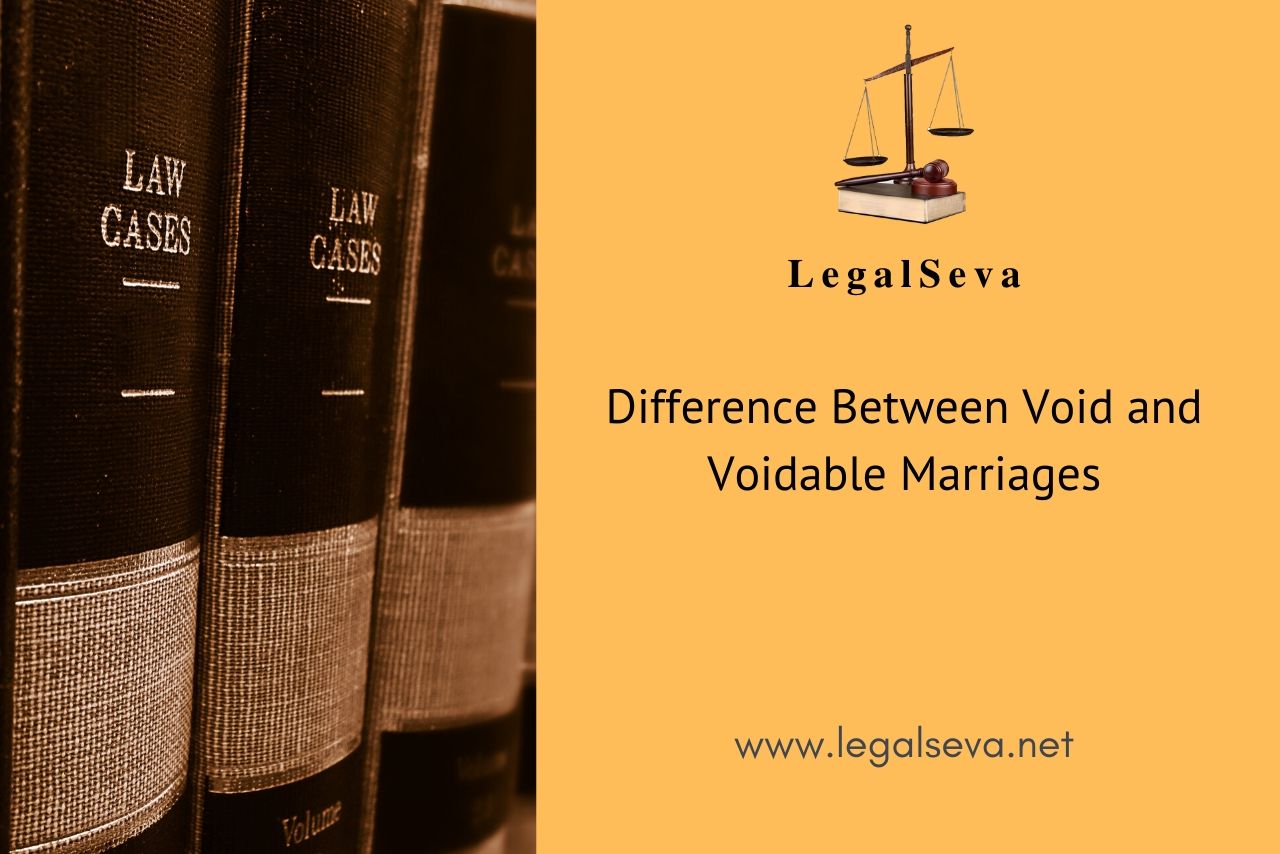Last Updated on December 7, 2019 by Legalseva.net
Marriage is a union of one man with one woman to the exclusion of all others. In India, the personal laws of the religion followed by the parties to the marriage lay down the rules regarding their marriage.
Also Read- MATRIMONIAL ISSUES
The State has made laws to regulate the social institution of the marriage over the years as well. For inter-religious and inter-nation marriages we have the Special Marriage Act, 1954 and the Foreign Marriage Act, 1969 respectively. In addition, we also have some secular laws dealing with matrimonial affairs in the form of Section 125 in the CrPC, Sections 498A of the IPC, Family Courts Act, 1984 and the Domestic Violence Act, 2005. The Indian Christian Marriage Act, 1872 is followed for regulation of marriage by Christians in India.
Also Read- LEGAL NOTICE TO WIFE OR HUSBAND
The Hindu Marriage Act, 1955
All marriages between two Hindus, Buddhists, Jains or Sikhs, or any conversions to Hinduism are covered under the Hindu Marriage Act, 1955.
The Hindu Marriage Act, 1955 mentions three types of marriages:
1. Valid,
2. Void and
3. Voidable.
Also Read- ACQUITTAL IN ABETMENT OF SUICIDE CASE AGAINST HUSBAND
The three kinds of marriages can be distinguished on the basis of the pre-marriage impediments which have been provided for in Section 5 of the Act.
If absolute impairments are present in a marriage, then such marriage is void ab initio i.e. invalid from the very beginning in the eyes of law.
Section 11 talks about void marriages, while Section 12 deals with voidable marriages. All the marriages that are not covered by sections 11 and 12 are valid in nature.
Also Read- LOVE MARRIAGE PROTECTION REGISTRATION AND HIGH COURT
Void Marriages
Section 11 (Nullity of marriage and divorce- Void marriages) of the Act has considered the following marriage (s) to be void:-
If any party to a marriage, solemnized after the commencement of this act, files a petition against the other party to the marriage, and such marriage happens to be in contravention clauses (i), (iv) and (v), of Section 5 of the act, the marriage is void. These clauses are:
Also Read- CRUELTY AGAINST WOMEN LAWS IN INDIA
- Monogamy, that requires the parties to the marriage to not have a living spouse already while getting married.
- The parties should not be within the degrees of prohibited relationship, unless the custom or usage followed by each of them allows their marriage.
Section 3(g) explains degrees of prohibited relationship in detail and it states that:
‘two persons are said to be within the “degrees of prohibited relationship”-
(I) if one is a lineal ascendant of the other; or
(ii) if one was the wife or husband of a lineal ascendant or descendant of the other; or
(iii) if one was the wife of the brother or of the father’s or mother’s brother or of the grandfather’s or grandmother’s brother or the other; or
(iv) if the two are brother and sister, uncle and niece, aunt and nephew, or children of brother and sister or of two brothers or of two sisters.’
Also Read- MAKING DOWRY COMPLAINT AGAINST HUSBAND
- The parties must not be sapindas to each other, which is again subject to the customs or usage of the parties. Sapindas require that a person cannot marry in the same family.
Section 3(f)(i) of the act explains sapindas in detail, and it states that:
‘The “Sapinda relationship” with reference to any person extends as far as the third generation(inclusive) in the line of ascent through the mother, and the fifth (inclusive) in the line of ascent through the father, the line being traced upwards in each case from the person concerned, who is to be counted as the first generation;
two persons are said to be “sapinda” of each other if one is a lineal ascendant of the other within the limits of sapinda relationship, or if they have a common lineal ascendant who is within the limits of sapinda relationship with reference to each of them’.
If any of the above mentioned conditions are not met with, the marriage is bound to become null and void.
Also Read- DOWRY COMPLAINT AGAINST IN LAWS
The act mentions that only a party to the marriage can file a petition for the declaration of nullity of marriage. For instance, if a man marries a woman while he already has a wife, the first wife in this case cannot approach the court for the declaration of nullify of the second marriage of her husband.
However, she is not debarred from filing a regular suit in a civil court to declare the marriage void, if she was affected by the second marriage. Consequential relief can be demanded under Specific Relief Act, 1963, if there is a cause of action for such relief.
Also Read- ANTICIPATORY BAIL IN 498A CASES
Consequences of a void marriage
• The parties do not have to pay heed to marital obligations as they are no longer wife and husband
• Children of a void marriage are illegitimate (which is subject to the provision of section 16 of Hindu Marriage Act 1955).
Also Read- COMPLAINT AGAINST NRI HUSBANDS
Case Laws
In Uma Shanker v. Radha Devi, the Patna High Court held that the first wife could obtain a perpetual injunction to prevent the second marriage of her husband under Section 9 of the Civil Procedure Code and Section 54 of the Specific Relief Act.
In the case of Leela v. Lakshmi 1968, it was held that if a marriage is void, a decree of the court is not required to declare the same.
Also Read- MUTUAL DIVORCE PROCEDURE IN EASY STEPS
Voidable Marriages
Voidable means that the marriage remains valid until it is avoided or declared void by the party which is aggrieved and is allowed to avoid the marriage. Section 12 further provides for grounds that will render a marriage voidable. These include:
(a) if the marriage has not been consummated as the respondent is impotent. Such impotency can be a mental or physical condition that renders consummation of the marriage a practical impossibility.
(b) if the marriage is in contravention of the conditions specified in clause (ii) of section 5, which states that the party is suffering from a mental disorder or recurrent insanity attacks, or that the party’s consent was vitiated due to unsoundness of mind
(c) if the consent to the marriage was obtained by fraud. If the parties continues to live as husband and wife even after the discovery of the fraud, the party cannot approach the court.
(d) if the respondent was at the time of the marriage pregnant by some person other than the petitioner.
Also Read- CHILD CUSTODY IN DIVORCE
The application for the dissolution of marriage must be filed within a year. No marital intercourse should’ve taken place between the parties after the discovery of any of the above said grounds.
You may also consult or seek free legal advice from expert matrimonial/family lawyer in Chandigarh Panchkula Mohali Kharar Zirakpur Derabassi for your case if required.
This post is written by Simranjot Kaur. For more info, please dial 99888-17966.


